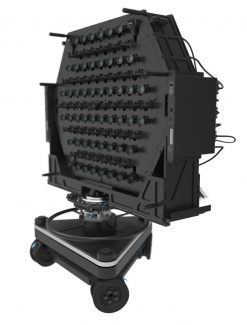Lytro Reveals Immerge 2.0 Light-field Camera with Improved Quality, Faster Captures
Lytro’s Immerge light-field camera is meant for professional high-end VR productions.
The company has revealed a major update to the camera, the Immerge 2.0, which, through a few smart tweaks, makes for much more efficient production and higher quality output.

Light-field specialist Lytro, which picked up a $60 million Series D investment earlier this year, is making impressive strides in its light-field capture and playback technology. The company is approaching light-field from both live-action and synthetic ends; last month Lytro announced Volume Tracer, a software which generates light-fields from pre-rendered CG content, enabling ultra-high fidelity VR imagery that retains immersive 6DOF viewing.
...the Immerge 2.0 has alternating rows of cameras pointed off-axis in opposite directions.
With the change to the camera angles, and tweaks to the underlying software, the lenses on Immerge 2.0 effectively act as one giant camera that has a wider field of view than any of the individual lenses, now 120 degrees (compared to 90 degrees on the Immerge 1.0).
In practice, this can make a big difference to the camera’s bottom line: a wider field of view allows the camera to capture more of the scene at once, which means it requires fewer rotations of the camera to capture a complete 360 degree shot (now with as few as three spins, instead of five), and provides larger areas for actors to perform.
Ever Increasing Quality
Lytro has also been refining their software stack which allows them to pull increasingly higher quality imagery derived from the light-field data.
Pages
- About Philip Lelyveld
- Mark and Addie Lelyveld Biographies
- Presentations and articles
- Tufts Alumni Bio